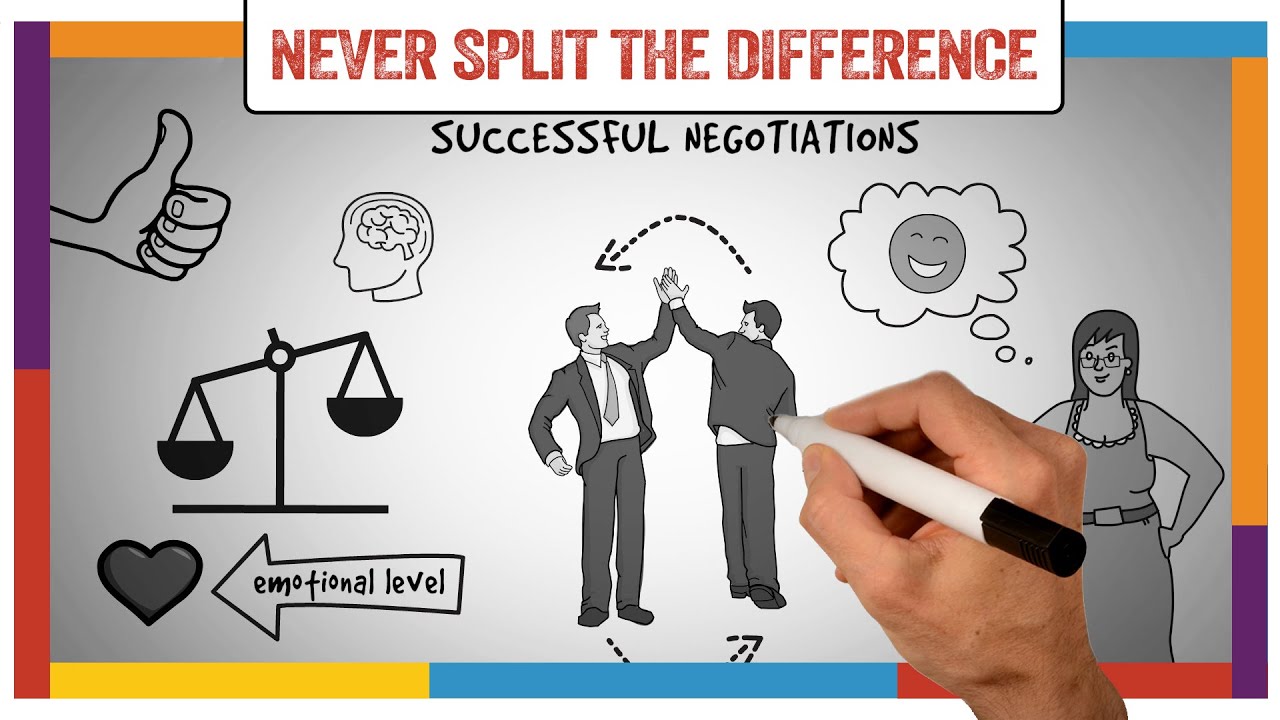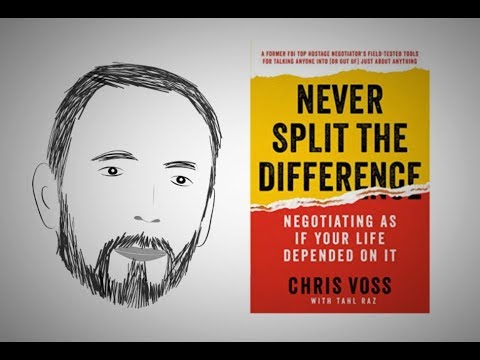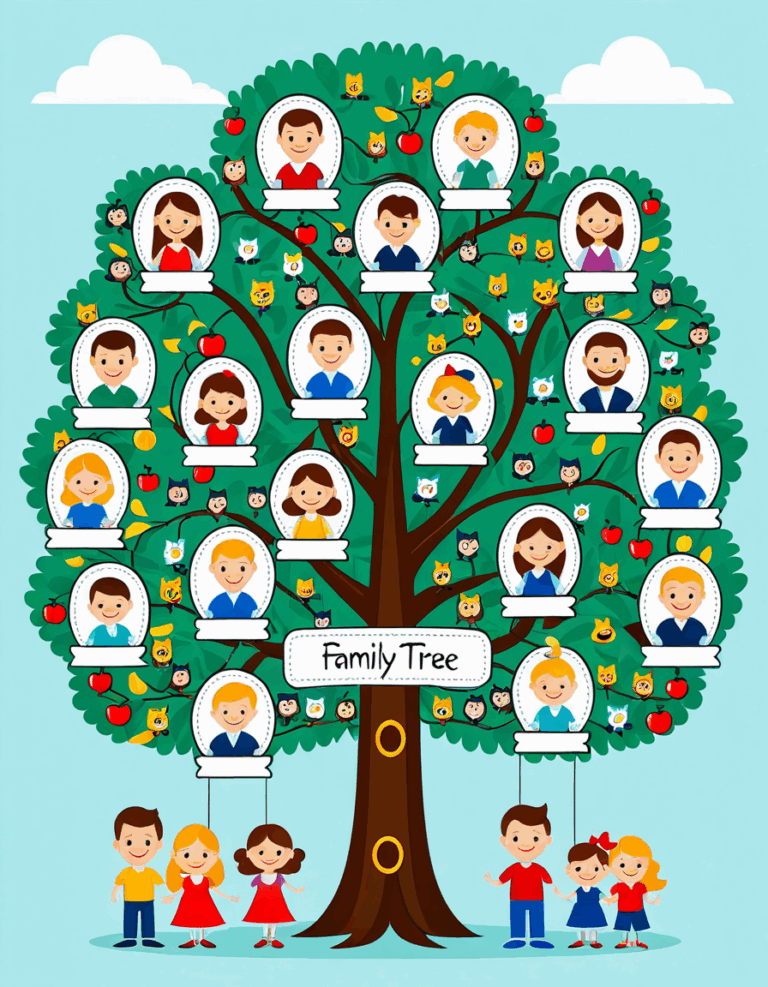In a world full of negotiations—from sealing business contracts to settling family disputes—understanding how to get the best deal can feel like a high-stakes game. Enter Chris Voss, a former FBI hostage negotiator and the author of Never Split the Difference. His groundbreaking techniques have opened doors for better negotiations in professional and personal realms alike. With practical insights and real-world applications, mastering Voss’s strategies offers a transformative advantage.
Navigating the art of negotiation involves more than just winning; it’s about discovering pathways to create agreements that satisfy both sides. Let’s dive into five key strategies from Never Split the Difference that can help you flip the script and drive impactful negotiations.

Top 5 Strategies from ‘Never Split the Difference’ That Can Revolutionize Negotiations

1. Use Tactical Empathy to Connect Emotionally
Voss emphasizes tactical empathy as a powerful negotiating tool. It’s not just about sympathy; it’s about genuinely understanding the emotions of the person on the other side of the table. Take Apple, for instance. When negotiating with suppliers facing production deadlines, Apple recognizes that these suppliers may be under substantial pressure. By validating their concerns, it’s a win-win scenario—the supplier feels heard, paving the way for concessions in prices or timelines.
Connecting emotionally doesn’t only foster rapport; it lays a foundation for more cooperative dialogue. Whether you’re negotiating a major business deal or discussing family matters, acknowledging emotions can transform a potentially tense conversation into a collaborative effort.
2. Master the Art of “No” to Gain Control
Contrary to popular belief, the word “no” can be a powerful ally in negotiations. Voss argues that hearing “no” allows your counterpart to feel secure and understood. This tactic shines in high-stakes situations like player contracts in sports. Imagine an NHL team presenting a lower initial offer and allowing the player to voice concerns. By inviting objections, the negotiation can shift to focus on solutions rather than purely demands.
Giving your counterpart permission to say “no” also allows them to regain a sense of control. This technique flips the dynamic, making negotiations feel less like a battle and more like a cooperative dialogue where both parties can find common ground.
3. The “Accusation Audit”: Preempt Concerns
Preempting potential objections before a negotiation starts can be a game changer. Voss advises conducting an accusation audit to address concerns upfront. A prime example occurs at Tesla; they proactively discuss pricing or supply chain challenges with suppliers. This open communication helps diffuse any tension, resulting in a more productive negotiation environment.
Bringing potential hiccups out in the open fosters trust and minimizes surprises. By alleviating concerns before they arise, you’re paving the way for a more efficient discussion. In a world where transparency can feel rare, this strategy can be a breath of fresh air for both parties.
4. Pick a Number: Strategic Anchoring
Strategic anchoring is about starting negotiations with a strong offering to set the tone. Voss advises negotiators to “pick a number” carefully. For example, Airbnb employs this strategy by introducing slightly higher but competitive pricing, providing justification through value-added services. This anchors the conversation by framing it around perceived value.
Asking the right questions and setting a benchmark can steer discussions toward favorable outcomes. By strategically positioning your opening offer, you craft a narrative that’s difficult for the other party to dismiss or undervalue.
5. Integrate “NO” into the Picture: The Next Chess Move
In negotiations, understanding your counterpart’s “next chess move” is imperative. Just like anticipating your opponent’s strategies in chess, preparing for responses allows negotiators to stay ahead. Coca-Cola relies heavily on this knowledge when negotiating with various bottlers, taking the time to consider potential reactions to pricing shifts and preparing offers accordingly.
By keeping one step ahead, you can guide negotiations toward favorable terms. This forward-thinking approach not only enhances your bargaining power but allows for a more fluid, responsive negotiation process.

Win-Win: Picking 3 Winning Numbers in Negotiation
Negotiating is often likened to a game of checkers; every move should be calculated. By selecting three winning tactics from Never Split the Difference, you can elevate your negotiations from mere compromise to true win-win outcomes.
Winning Number 1: Implement Effective Labeling
Labeling emotions creates a bridge between perspectives. By articulating what you feel or sense, you help the other party realize they’re being understood. For instance, if you sense frustration during a negotiation, saying, “It seems like you’re frustrated with this process,” can foster deeper dialogue and collaboration.
This approach encourages openness, allowing both parties to express their feelings and thoughts more freely. What initially feels like a hindrance can quickly evolve into a constructive conversation.
Winning Number 2: The “FBI” Approach
Curiosity should reign supreme during negotiations. Voss champions the “FBI” method, which stands for Feel, Believe, and Influence. This technique encourages negotiators to listen more and speak less. When negotiating a potential partnership deal with a company like Spotify, focusing on their needs and feelings can uncover new opportunities for collaboration.
By being genuinely curious about the other party’s needs, extensive dialogue can blossom. This, in turn, enables you to tailor your contributions to align with their goals, making your proposal increasingly hard to refuse.
Winning Number 3: The “Paint by Numbers” Principle
Lastly, the “paint by numbers” principle allows negotiators to present structured steps guiding the other party towards a desirable outcome. LinkedIn exemplifies this when negotiating advertising space—offering clear, step-by-step options that underscore the benefits can relieve pressure and lead to commitment.
By outlining a visual roadmap during negotiations, parties can envision the end result. This not only simplifies the process but also makes the benefits feel tangible and attainable.

Final Thoughts: Elevating Negotiation to an Art
Mastering the strategies within Never Split the Difference requires a shift in mindset. Using techniques like tactical empathy, strategic anchoring, and preemptive communication fosters negotiation environments where all parties feel respected. As you set out to negotiate, remember that every interaction is an opportunity to build relationships and create value.
In a world driven by deals and partnerships, employing Voss’s insights can lead to profound transformations in how we approach negotiations. Consider embracing these tactics, and as you do, you might find that the art of negotiation becomes not just a skill set but a core element of your professional identity. Negotiation isn’t just about splitting the difference; it’s about finding a way that everyone walks away feeling like a winner.

Never Split The Difference: Secrets That Transform Deals
Effective negotiation can be as thrilling as any action-packed film—think “Robin Hood: Prince of Thieves,” where clever tactics turn the tables. In “Never Split The Difference,” Chris Voss challenges the age-old tactic of compromise. Instead of merely splitting the difference, Voss encourages negotiators to understand emotions and leverage them for better outcomes. Did you know that he even draws from real-life hostage negotiations in his strategies? That puts your everyday business deal in perspective!
Tactics and Techniques Revealed
So, what’s his secret sauce? For starters, Voss emphasizes listening more than talking. That’s akin to the way a Spacebar Clicker can help you focus—just like in text-based games, sometimes the simplest approach can yield the highest rewards. When you truly listen, you’re better equipped to understand the other party’s needs and can tailor your arguments accordingly. Trying to make a point without being in tune with your counterpart is a bit like trying to play Plusword without knowing the rules—you might be setting yourself up for failure!
Speaking of needs, Voss breaks down several common negotiation tactics, stressing the importance of emotional intelligence. Just like a classic “Mr. Goodbar,” which combines nutty and chocolatey goodness, successful negotiations often require a delightful mix of empathy and firmness. A notable trivia nugget is how effective mirroring can create rapport, making the other party feel understood. Isn’t that a sweet deal? It’s all about creating connections that help you get to “yes” while avoiding the pitfall of mere compromise.
The Bigger Picture of Successful Negotiation
Another fascinating nugget involves the concept of “no.” Contrary to popular belief, saying “no” can actually open doors. When someone hears “no,” it can lead them to clarify their position, which gives you more information to work with. Imagine playing a strategic game of 247 Hearts with your opponent—each card reveals a little more about their strategy and weaknesses. You can use that insight to your advantage!
Lastly, keeping your goals clear is crucial in negotiations. Just like Saferweb promotes online safety, knowing what you really want ensures you’re not swayed by distractions. If you find yourself drifting off track, it might be time to define borrow in your own terms rather than having your objectives clouded by compromise. So, next time you negotiate, remember the wisdom of “Never Split The Difference”: understanding, strategy, and empathy are your best allies!
























